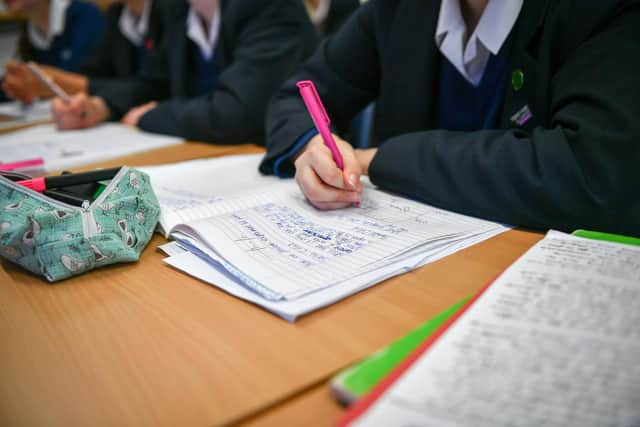Disadvantaged secondary school pupils in Wigan fell further behind their classmates during the coronavirus pandemic, new figures show.
and live on Freeview channel 276
It follows the trend seen across England, and education charity SHINE said it is "saddened but not surprised" to see disadvantaged children fall behind.
Department for Education figures show 26.2 per cent of disadvantaged children in Wigan achieved grade five or above in GCSE English and maths in 2021-22, compared to 54.1 per cent for all other children.
Advertisement
Hide AdAdvertisement
Hide AdIt meant the attainment gap was 27.9 percentage points last year – up from 25.2 in 2018-19, the last academic year uninterrupted by Covid-19.


Nationally, 29.5 per cent of disadvantaged children reached grade five or above in English and maths, whereas 56.8 per cent of all other children achieved the grades.
It means the attainment gap rose from 25.2 percentage points in 2018-19 to 27.3 in 2021-22.
And the figures also show that across England, the disadvantage gap index – a broader measure of child performance at school – reached its largest point in 10 years in 2021-22 after widening throughout the pandemic.
Advertisement
Hide AdAdvertisement
Hide AdSHINE said the link between deprivation and children's school performance existed long before Covid-19, but that the pandemic "amplified existing inequities".
Dr Helen Rafferty, senior programme manager at the charity, said: "We know that children from poorer backgrounds lost out on more learning than their wealthier peers, are more likely to experience challenges with attendance, and are most in need of stability and support from schools and teachers.
"Now, without intervention, the cost-of-living crisis and mooted cuts to already-stretched school budgets risk widening the gap even further."
Dr Rafferty warned that school leaders must make impossible decisions due to budget cuts just as disadvantaged children need increased support, and said that targeted support for specific children and schools in certain areas is required to close the gap.
Advertisement
Hide AdAdvertisement
Hide Ad"Additional funding should be targeted at children and schools who experience persistent long-term disadvantage, whom we know are at the greatest risk of falling behind," she added.
Different figures detailing attainment across eight GCSE subjects show the gap between the average cumulative grade of disadvantaged children compared to their peers has also widened across England, from 13.6 in 2018-19 to 15.1 in 2021-22.
In Wigan, non-disadvantaged children outperformed disadvantaged pupils by 15.2 points last year – up from 14.7 before the pandemic.
